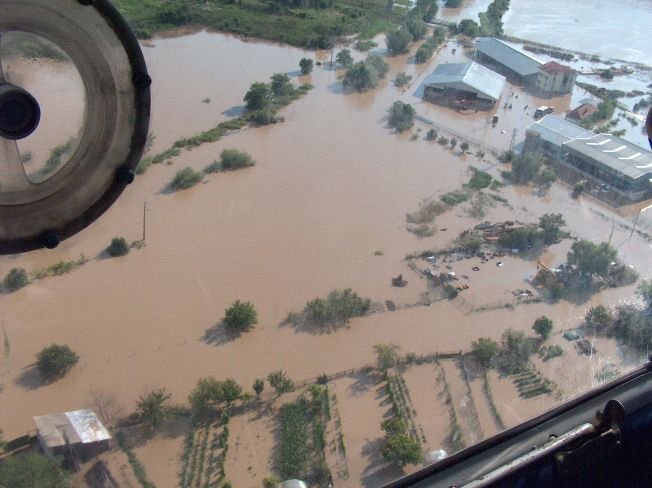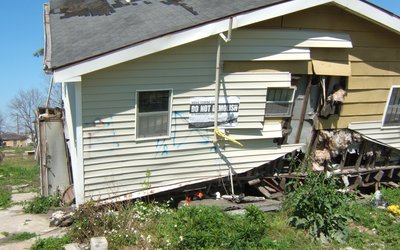
The impact of climate change and socio-economic development in the European Union has been assessed under the assumption of uniform flood protection levels up to the 50-, 100- and 250-year flood event. This was done for 12 climate experiments derived from a combination of 4 GCMs and 7 RCMs, covering the period 1961–2100, under a medium–high emission scenario (A1B).
Population affected
Under the assumption of protection against a 100-year flood event, the current EU expected annual population affected is ca. 200,000. In the absence of measures to keep flood protection at the 100-year flood level, the combined effect of climate and demographic changes would increase this number to approximately 360,000 people by the 2080s. At a 100-year flood protection level, presently less than 0.1% of the population in all countries is annually affected by floods. By the end of this century, the highest average relative impact on population at this flood protection level is projected for Austria (0.15%), Hungary (0.13%), the Netherlands (0.13%), Slovenia (0.18%) and the UK (0.13%). In the Netherlands, however, protection standards by far outweigh the assumed 100-year protection level; hence the true number of people affected in the Netherlands is likely overestimated.
Annual damage
Assuming protection against a 100-year flood event, the estimated EU expected annual damage for the period 1961–1990 is €5.5 billion. In the absence of measures to keep flood protection at the 100-year flood level (no adaptation), annual damages are projected to reach €98 billion/year (constant 2006 prices, undiscounted) by the 2080s due to the combined effects of socio-economic and climate change. The largest share of these damages arises from socio-economic development. With adaptation, keeping flood protection at the 100-year protection level, the avoided damages (benefits) would amount to €53 billion/year by the 2080s.
Assuming less stringent protection up to the current 50-year event, EU damages amount to €174.2 billion/year by the end of this century. For a protection level equal to the current 250-year event, on the other hand, EU damages would total €41.3 billion/year by the 2080s.
For most countries present damages under a 100-year flood protection level are well below 0.5% of the national GDP. In general, higher relative impacts are observed in Eastern European countries, especially in Hungary and Slovakia (0.8% and 0.6%, respectively). By the end of this century, relative economic impacts are projected to increase for all EU countries except Poland and the Baltic States. In relative terms, Eastern European countries will still be most severely affected by flooding, especially Hungary (1.36%), but also Slovakia (0.87%), the Czech Republic (0.81%), and Romania (0.79%).
About 82.3% of the damages relate to residential areas, 6.8% to industry, 4.9% to commerce, 4.7% to agriculture and only 1.3% to industry.
Benefits of upgraded flood protection
At the country level significant benefits were identified for the United Kingdom, France, Italy and Hungary from upgrading protection levels to the future 100- year flood event. However, also Romania, the Czech Republic, Slovakia, Slovenia and Bulgaria would see large benefits relative to their GDP. Some countries in Eastern Europe would potentially have to spend a significant share of their current GDP to abate the future impacts from flooding in view of socio-economic and climate changes – notably Slovenia (0.7%), Bulgaria (0.6%), Romania and Hungary (both close to 0.45% of current GDP).
Source: Rojas et al, 2014. Global Environmental Change 23: 1737–1751.
Photo: Wilfried ten Brinke








